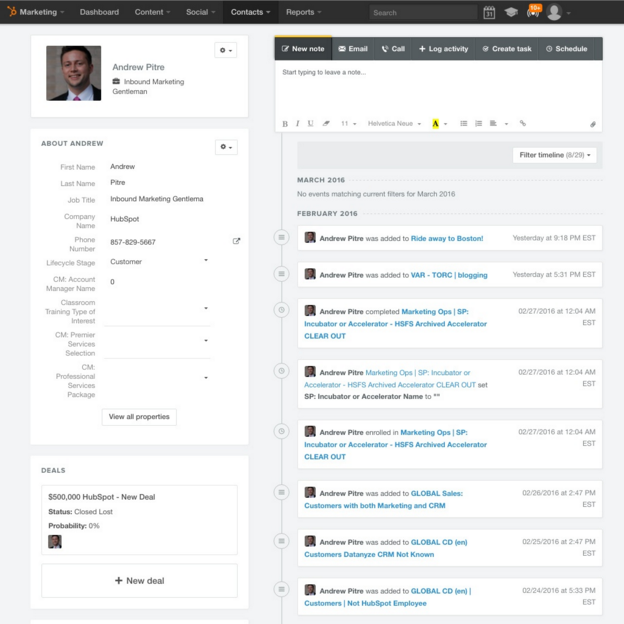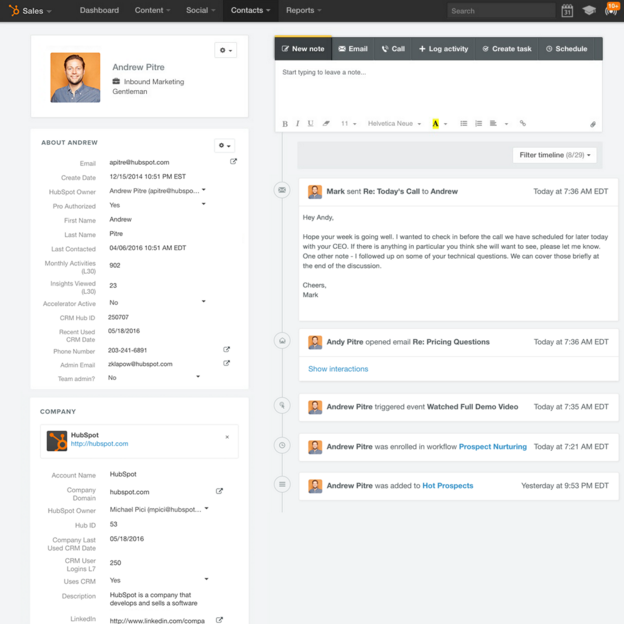
Measuring the effectiveness of digital marketing is one of the greatest challenges facing organizations. According to HubSpot’s 2016 State of Inbound report, 46% of marketers cited “proving the ROI of our marketing activities” as one of the biggest challenge they face within their company.
The trouble is, when most marketers hear ‘digital marketing analytics,’ they tend to think of the metrics you’d typically associate with a web analytics tool like Google Analytics — traffic, bounce rate, unique visitors, etc.
While web analytics can provide you with a wealth of insight and data into the performance of your website, marketers really need much richer data to understand the impact of their marketing campaigns on conversion rates and a person’s journey through the marketing and sales funnel. Looking at top-level web analytics metrics like traffic is only part of the puzzle.
Enter digital marketing analytics, which offers a much more comprehensive view of what’s working, and what isn’t.
Why Digital Marketing Analytics Matter More Than Web Analytics
So why exactly do digital marketing analytics matter? Quite simply, because web analytics (like traffic and website performance) just isn’t enough. The data web analytics provides just don’t cut it for marketers who need to understand how their work makes an impact throughout the entire marketing and sales funnel.
Let’s face it: Today’s marketing goes well beyond the bounds of your website. It’s the intersection of what happens between your marketing channels and the outcome on the other side that provides the most marketing insight, and your reporting needs to reflect this.
Web analytics measure things a webmaster or technical SEO specialist cares about, like page load speed, page views per visit, and time on site. Digital marketing analytics, on the other hand, measure business metrics like traffic, leads, and sales, and which online events influence whether leads become customers. Digital marketing analytics includes data not only from your website, but also from other sources like email, social media, and online PR.
With digital marketing analytics, marketers can understand the effectiveness of their marketing, not just the effectiveness of their website. Using marketing analytics allows marketers to identify how each of their marketing initiatives (e.g., social media vs. blogging vs. email marketing, etc.) stack up against one another, determine the true ROI of their activities, and understand how well they’re achieving their business goals.
As a result of the information they can gather from full-stack digital marketing analytics, marketers can also diagnose deficiencies in specific channels in their marketing mix, and make adjustments to strategies and tactics to improve their overall marketing activity.
You can spend hours and hours slicing and dicing data in web analytics tools, comparing new vs. repeat visitors month over month, but when it comes down to it, you’ll never have a comprehensive understanding of how your marketing is doing. Marketers have known this for a long time (check out the explosion of people searching for the term ‘digital marketing analytics’ taken from Google Trends below).

There’s no doubt that marketers are aware there’s a deficiency in how they’re able to measure the effectiveness of what they do; here’s how full-stack digital marketing analytics makes up for that deficiency.
Why Digital Marketing Analytics Gives You the ‘Full Picture’
There are lots of things that digital marketing analytics achieves where basic website analytics falls short. Let’s highlight three of the main differentiators:
1. Integration across different marketing channels.
With digital marketing analytics, you have a good, solid look into the direct relationships between your marketing channels. It’s great to be able to see how each of your individual channels (e.g., social media, blogging, email marketing, SEO, etc.) are performing, but the true power of analytics comes into play when you can easily tie the effect of multiple channels’ performances together.
For instance, let’s say you did an email send to a segment of your database. Digital marketing analytics not only tells you how many people clicked through from your email to your website, but also how many of those people actually converted into leads for your business when they got there. Furthermore, you can compare the impact of that individual email send with other marketing initiatives. Did that email generate more leads than the blog post you published yesterday? Or was the content you shared via Twitter more effective?
2. People-centric data on the buyer’s journey.
As we mentioned earlier, a key differentiator between web analytics and digital marketing analytics is that the latter uses the person — not the page view — as the focal point.
This enables you to track how your individual prospects and leads are interacting with your various marketing initiatives and channels over time. How did an individual lead first come to find your website? From Google? Via Facebook? From direct traffic? Is that lead an active part of your email subscriber base, often clicking and converting on marketing offers presented via email? Do they read your blog?
Full-stack digital marketing analytics can tell you all of this and more, providing you with extremely valuable lead intelligence that can help inform the direction of your future campaigns.

Looking at all of this information in aggregate can help you understand trends among your prospects and leads and which marketing activities are valuable at different stages in the buyer’s journey.
Perhaps you find that many customers’ last point of conversion was on a certain ebook or whitepaper. Having this data makes it possible to implement an effective lead management process, enabling you to score and prioritize your leads and identify which activities contribute to a marketing qualified lead for your business.
3. Closed-loop data.
One of the most useful functions of marketing analytics is its ability to tie marketing activities to sales. Sure, your blog may be effective in generating leads, but are those leads actually turning into customers and making your business money? Closed-loop marketing analytics can tell you.
The only dependency here is that your digital marketing analytics system is hooked up with your customer relationship management (CRM) platform like the free HubSpot CRM, for example.

Having this closed-loop data can help you determine whether your individual marketing initiatives are actually contributing to your business’ bottom line. Through it, you can determine which channels are most critical for driving sales. Perhaps you find that your blog is your most effective channel for generating customers, or conversely, you find that social media is really only powerful as an engagement mechanism, not a source of sales.
The Digital Marketer’s Measurement Challenge
Most marketers know they need to be looking at more than just traffic and website performance to get the insights we’ve talked about so far, but why do so many of us still struggle to measure the impact and prove the ROI of our online marketing activities?
Probably because:
- A) We don’t have solid goals in place for our campaigns.
- B) We don’t have the means to successfully measure our success.
Quite often, you’ll find it’s a combination of the two.
The fact is, most marketers need to have a number of different digital marketing analytics platforms in place in order to get all the insights they need to understand their marketing performance and make sound decisions. They gather data about their email marketing through the analytics provided by their email service provider, information about their social media performance through their social media monitoring tool, blog analytics from their blogging platform, and the list goes on.
This fragmented approach to reporting makes it really difficult to connect the dots and make informed decisions about the future of your strategy. The ideal solution is to implement an all-in-one marketing and reporting platform that offers end-to-end visibility on your marketing activities, allowing you to measure everything in one place.
How Digital Marketing Analytics Impacts Your Business
All of the insights, information, and data you can gather from your digital marketing analytics tool(s) is really only useful if you do something with it. The true value of analytics isn’t just to prove the value of marketing to your boss; it’s also to help you improve and optimize your marketing performance — on both an individual channel-by-channel basis as well as an overall, cross-channel machine.
As mentioned above, you’ll also be able to implement closed-loop reporting, making it easier to prove how your marketing efforts are positively impacting your sales team, who are being fed much higher quality leads.
The important thing to realize here is, if you’re relying solely on top-level web analytics, you’re missing out on a lot of powerful data that can help inform your marketing strategy. So when evaluating digital marketing analytics tools for your business, be sure you’re looking for evidence of digital marketing analytics, not just website analytics.
How are you faring in terms of digital marketing measurement? Are your analytics sophisticated enough to effectively measure your marketing performance?


